#early 20th century french illustration
Explore tagged Tumblr posts
Text

Félix Lorioux (French, 1872–1964) • Illustration of Tom Thumb from Tales of Perrault , Charles Perrault, authot (1628-1803) • 1926
#illustration#art#illustrator#artwork#félix lorioux#french artist#early 20th century french illustration#book illustration#charles perrault#french author#french fairytales#17th century fairytales#sassafras and moonshine blog#illustration blogs on tumblr#vintage illustration#fairy tales
28 notes
·
View notes
Text

La Musique, 1903 François Flameng
#François Flameng#french art#illustration#art#painting#art history#1900s#early 20th century#fantasy#musician
1K notes
·
View notes
Text

Illustration from 'Album Mariani', 1904
By Eugène Grasset
#art#fine art#classical art#drawing#swiss art#french art#swiss painter#french painter#graphic art#illustration#swiss artist#20th century art#early 1900s#european art
10 notes
·
View notes
Text
More Art-Related Vocabulary

Abstract Expressionist: An artistic movement of the mid-20th century emphasizing an artist’s freedom to express attitudes and emotions, usually through nonrealistic means.
Age of Exploration (also, Age of Discovery): From the early 15th century to the early 17th century, European ships traveled around the world in search of new trading routes, lands, and partners to supply an ever-growing European market.
Albumen silver print: A photograph made using a process that was prevalent until the 1890s. The paper is coated with albumen (egg whites), and the image is created using a solution of silver salts.
Brayer: A hand roller used for applying ink to relief printing blocks or occasionally for the direct application of paint or ink to a surface.
Caricature: A representation in either literature or visual art that includes a ridiculous distortion or exaggeration of body parts or physical characteristics to create a comic or gross imitation.
Ceramics: Vessels of clay made by using a variety of shaping techniques and then hardening or firing the clay with heat at a high temperature.
Chasing: A term encompassing two processes in metalworking: (a) modeling decorative patterns on a hand-shaped sheet-metal surface using punches applied to the front, and (b) finishing and refining a cast sculpture.
Classical: Describes a prime example of quality or “ideal” beauty. It often refers to the culture, art, literature, or ideals of the ancient Greek or Roman world, especially that of Greece in the 4th and 5th centuries B.C.
Collage: An art form and technique in which pre-existing materials or objects are arranged and attached as part of a two-dimensional surface.
Color palette: (a) A set of colors that makes up an image or animation, and (b) the group of colors available to be used to create an image.
Composition: The process of arranging artistic elements into specific relationships to create an art object.
Daguerreotype: An early method of photography produced on a silver plate or a silver-covered copper plate made sensitive to light.
Exoticism: Fascination with and exploration and representation of unfamiliar cultures and customs through the lens of a European way of thinking, especially in the 19th century.
Expressionism: A style of art inspired by an artist’s subjective feelings rather than objective or realistic depictions based on observation. Expressionism as a movement is mainly associated with early 20th century German artists interested in exploring the spiritual and emotional aspects of human existence.
Gelatin silver print: A photograph made through a chemical process in which a negative is printed on a surface coated with an emulsion of gelatin (an animal protein) containing light-sensitive silver salts.
Illuminated manuscript: Comes from the Latin words illuminare (to throw light upon, lighten, or brighten), manus (hand), and scriptus from the verb scribere (to write). A handwritten book, usually made from specially prepared animal skins, in which richly colored and sometimes gilded decorations, such as borders and illustrations, accompany the text.
Illuminator: A craftsman or artist who specializes in the art of painting and adorning manuscripts with decorations.
Impressionist: Referring to the style or theories of Impressionism, a theory or practice in painting in which objects are depicted by applying dabs or strokes of primary unmixed colors in order to evoke reflected light. Impressionism was developed by French painters in the late 19th century.
Inking plate: A flat surface used for rolling ink out in preparation for applying ink to a plate or block.
Inscription: A historical, religious, or other kind of record that is cut, impressed, painted, or written on stone, brick, metal, or other hard surface.
Source Art Vocabulary pt. 1
More: Word Lists
#art related#word list#photography#dark academia#writing reference#spilled ink#writeblr#literature#writers on tumblr#writing prompt#poetry#poets on tumblr#history#studyblr#creative writing#writing inspiration#writing inspo#writing ideas#art#konstantin somov#rainbow#nature#art vocab#writing resources
68 notes
·
View notes
Text










"Have One On Me" comparison :
-Focus on Sarah Bernardt -
As Joanna said in an interview, a model in a some parisian art studio around 1920 in Paris (France) is one of the inspirations for the HOOM cover photo. Here we have some pictures (and two illustrations) of the famous french actress Sarah Bernhardt in her parisian studio (late 1890's - early 1900). This is not exactly the right year, neither a model in an art studio. But more over the resemblance between the HOOM cover and the luxurious exuberant appartement, there is plenty of others paralels that I will explained in others posts. As a part of the parisian art scean of her time, Sarah Bernhardt was depicted by difrent painters and artist during the years. So, we may consider her as "parisian art model", but you'll see later.
Fun fact: it seems that the images here are not from a set, but the inside of her personal appartement. What a flamboyant and exuberant place to live!
Sarah Bernhardt (Born Henriette-Rosine Bernard; 22 October 1844 – 26 March 1923) was a French stage actress who starred in some of the most popular French plays of the late 19th and early 20th centuries, including La Dame aux Camélias by Alexandre Dumas fils, Ruy Blas by Victor Hugo, Fédora and La Tosca by Victorien Sardou, and L'Aiglon by Edmond Rostand. She played female as well as male roles, including Shakespeare's Hamlet. Rostand called her "the queen of the pose and the princess of the gesture", and Hugo praised her "golden voice". She made several theatrical tours around the world, and she was one of the early prominent actresses to make sound recordings and to act in motion pictures.
78 notes
·
View notes
Note
Who are your favorite artists? The art kind.
I'm a bit surprised I haven't been asked this question before!
I appreciate so many artists that it's hard to narrow it down. But based on what I can remember and what I can check on my Instagram and bookshelf, here are some of my favorites:

Gustave Doré (1832–1883) → A French artist, illustrator, and sculptor, celebrated for his intricate and dramatic engravings and illustrations. He is best known for his illustrations of classic literary works, including Dante Alighieri's The Divine Comedy, John Milton's Paradise Lost, and Edgar Allan Poe's The Raven. His skillful blend of realism and romanticism, combined with his mastery of visual storytelling, has established him as a significant figure in the history of illustration and fine art.

Vincent van Gogh (1853–1890) → A Dutch post-impressionist painter renowned for his expressive use of color and bold brushwork, which had a profound influence on 20th-century art. His most famous works, such as Starry Night, Sunflowers, and The Bedroom, showcase his unique style and emotional depth, capturing the beauty of the world around him.

Henriëtte Ronner-Knip (1821–1909) → A Dutch-Belgian painter best known for her detailed and charming depictions of domestic cats. Specializing in animal paintings, her style combined realism and a romantic touch, often portraying cats in cozy, playful, or elegant settings that captured their personalities and grace. She was celebrated for her ability to convey texture, particularly in fur, and created intimate, lifelike scenes that became popular in 19th-century bourgeois society.

John William Waterhouse (1849–1917) → A British painter associated with the Pre-Raphaelite movement, known for his romantic and mythological subjects. His art style blends elements of Romanticism and Classicism, featuring realistic figures, rich colors, and a strong focus on nature and detail. Waterhouse is best known for his depictions of female figures from mythology and literature, such as The Lady of Shalott and Ophelia, which convey a sense of beauty, melancholy, and mystery, making his work iconic in the realm of 19th-century art.

Harry Clarke (1889–1931) → An Irish stained-glass artist and illustrator. His work was influenced by Gothic art, Symbolism, Art Nouveau, and Irish folklore. This blend resulted in a distinctive aesthetic that harmoniously intertwines beauty with darker themes. Clarke is best known for his illustrations in classic literary texts, including James Joyce's Dubliners and Edgar Allan Poe's Tales of Mystery and Imagination. In these works, his illustrations masterfully balance whimsy and darkness, creating striking visual narratives that continue to resonate with audiences.

Alphonse Mucha (1860–1939) → A Czech painter and decorative artist best known for his distinctive Art Nouveau style, characterized by intricate, flowing lines, elaborate floral motifs, and a harmonious use of soft colors. Mucha's work often features idealized female figures, embodying beauty and elegance, and is heavily inspired by his fascination with nature and Slavic folklore. He gained fame for his poster designs, particularly those promoting the actress Sarah Bernhardt, as well as his decorative panels and illustrations.

J.C. Leyendecker (1874–1951) → An American illustrator renowned for his iconic magazine covers and advertising art, particularly his work for The Saturday Evening Post and the Arrow Collar Man campaign. Leyendecker's mastery of visual storytelling and branding helped shape American commercial art in the early 20th century, and he significantly influenced later artists, including Norman Rockwell.

Leonid Afremov (1955–2019) → A Belarusian-born artist known for his vibrant, impressionistic paintings created using a palette knife technique. His distinctive art style features bold colors and dynamic brushstrokes, often depicting landscapes, city scenes, and emotional moments, such as rain-soaked streets or sunlit parks.

Ayami Kojima → A Japanese artist and illustrator best known for her work in video game design, particularly as the character designer for the Castlevania series. Her art style is characterized by intricate, gothic aesthetics, combining dark fantasy elements with a detailed, ethereal quality.

Victoria Francés → A Spanish illustrator known for her evocative illustrations that blend gothic, fantasy, and romantic themes. She is particularly known for her illustrated books, including the popular series Faery Tales, which showcases her unique blend of fantasy and gothic aesthetics.

Yoshitaka Amano → A Japanese artist and illustrator renowned for his distinctive style in character design and concept art, particularly for the Final Fantasy video game series. His style fuses his interests in traditional Japanese aesthetics like those of wood block prints with Western fantasy elements. It results in ethereal forms, and a dreamlike quality, especially with Amano's use of watercolor techniques and intricate details to create a sense of movement and fluidity in his work.

Nico Delort (IG: nicodelort) → A French illustrator known for his detailed, black-and-white artworks created using scratchboard techniques. His art style is heavily influenced by the aesthetics of 19th-century engravings and woodcuts, blending elements of Gothic, fantasy, and mythological themes. Delort's work is recognized for its dramatic use of light and shadow, intricate textures, and atmospheric depth, often depicting moody, fantastical scenes.

Vania Zouravliov → A Russian-born artist known for his intricate, surreal illustrations that blend dark, fairy-tale-like themes with fine detail and symbolism. Zouravliov's work explores beauty and darkness, merging the macabre with the fantastical.

James Jean (IG: jamesjeanart) → A Taiwanese-American visual artist and illustrator known for his surreal, highly detailed works that blend elements of fantasy, mythology, and pop culture. Jean gained early recognition for his award-winning covers for DC Comics' Fables series.

Audrey Kawasaki (IG: audkawa) → A Japanese-American artist known for her blend of contemporary Japanese aesthetics and Western art influences. Her ethereal paintings often depict young women surrounded by nature, featuring intricate line work and a soft color palette. Her works are typically painted on wood panels, adding a quality that enhances the emotional depth of her subjects.

Jessica Cioffi (IG: Loputyn) → An Italian artist known for her enchanting illustrations and concept art that seamlessly blend traditional and digital techniques. Her work reflects the influence of 19th century neo-gothic and Japanese manga, and among the artist's favorite themes are witchcraft, folklore, and mystery.

Wenqing Yan (IG: yuumeiart) → A Chinese-American digital artist and illustrator known for her detailed, expressive art. Her style blends elements of anime, fantasy, and realism, featuring vibrant colors and intricate designs. Yan draws inspiration from nature, technology, and personal experiences, and she is well-known for her webcomic Fisheye Placebo and art series like Knite, which explore themes of activism, technology, and the environment.

Gretel Lusky (IG: gretlusky) → An Argentine digital artist and illustrator, Gretel Lusky is recognized for her whimsical, vibrant artwork featuring fantasy characters, and magical themes. Her style blends cartoon and anime elements, characterized by bold lines, expressive characters, and a colorful palette. She is well-known for her enchanting illustrations on social media, where she shares art tutorials and collaborates on various comics, book covers, and other projects. She is also known for her debut graphic novel Primer, an original graphic novel for DC Comics.

Margaret Morales (IG: margaretmoralesart) → A Filipino watercolor artist currently residing in America. Margaret Morales is known for her dreamy, ethereal portraits that intertwine feminine figures with elements of nature, such as flowers and animals. Her style, characterized by soft brushwork and pastel hues, creates a surreal, fairytale-like atmosphere. Her evolving work draws inspiration from art nouveau, mythology, fantasy, natural elements, Japanese/manga art, and fashion.

Tactooncat → An Indonesian digital artist known for creating illustrations that feature cats in a humorous and whimsical style, particularly cat memes and videos. Their work appeals to cat lovers and fans of lighthearted, expressive illustrations.
There are so many more, but hopefully the ones I've mentioned have caught your interest enough that you'll want to look them up. Each artist offers a unique perspective, whether through their distinctive style, use of color, themes, or techniques—there’s plenty to discover and enjoy.
#ask#anon ask#artists#art#artwork#anonymous#gustave dore#vincent van gogh#henriette ronner-knip#john william waterhouse#harry clarke#alphonse mucha#j.c. leyendecker#leonid afremov#ayami kojima#victoria frances#yoshitaka amano#nico delort#vania zouravliov#james jean#audrey kawasaki#jessica cioffi#loputyn#wenqing yan#yuumei#gretel lusky#margaret morales#tactooncat
30 notes
·
View notes
Text






























portrayals of bats in the 20th & 21st centuries
Bat Cabaret Sign - France - wrought iron, rolled iron, carved and embossed, green glass
pair of bats - ivory seal - China
Rene Lalique (French, 1860-1945) - bat brooch - 1900
bat design - Bijutsukai (Art World) - vol. 2 - 1901-1902
Rene Lalique (French, 1860-1945) - bat ring - 1901
Rene Lalique (French, 1860-1945) - bat pendant - 1901
Ferdinand Erhart (French, active 1891-1933) - Bat Belt Buckle - cast silver, carved and oxidized - 1908
Bat Brooch - France - c.1908
Henri Husson (French, 1852-1933) - Cup with Bat - c.1909
Ohara Koson (Japanese, 1877-1945) - Bats In Moonlight - c.1910
Harrison Cady (American, 1877-1970) - illustration for Mother West Wind Why Stories by Thornton Burgess - 1915
John Buckland Wright (British, 1897-1954) - illustration for Le Sphinx by Iwan Gilkin - 1919
Heinrich Kley (German, 1863-1945) - illustration for Der Orchideengarten (The Orchid Garden) - 1919
Bats and Crescent Moon - incense box - Japan - early 20th century
Weird Tales - October 1933
Black Bat Firecrackers
Edward Gorey (American, 1925-2000) - Bat & Ballerina - pin - New York City Ballet - c.1970s
Edward Gorey (American, 1925-2000) - Bats & Bicycles stencil illustration from The Broken Spoke - 1976
Edward Gorey (American, 1925-2000) - cover illustration for A Clutch of Vampires by Raymond T. McNally
Three of Bats - Tarot Card - 1996
Richard Cooluris (American, working in San Francisco) - Perseus and the Bat - mixed media painting on wood panel - 2016
Yegor Smirnov (working in Montreal) - Bat Ring - 3d-printed and casted in silver - 2016
Stephanie Inagaki (working in Los Angeles) - Trinity - charcoal & gold foil
Adam Binder (British, b.1970) - Bats - carved ebony & carved ivory
Wayan Tuges (luthier working in Indonesia) - Raised by Bats - Commemorative custom Blueberry guitar for Aurelio Voltair - 2020
#art by others#other's artwork#sculpture#painting#jewelry#lamp#guitar#illustration#box#drawing#tarot#book cover#pin#firecracker#seal#René Lalique#Ferdinand Erhart#Henri Husson#Ohara Koson#Edward Gorey#Harrison Cady#John Buckland Wright#Heinrich Kley#Yegor Smirnov#Stephanie Inagaki#Adam Binder#Wayan Tuges#Richard Cooluris
31 notes
·
View notes
Text

Illustration from "Les Chansons de Bilitis" 1922
George Barbier (1882–1932) was one of the great French illustrators of the early 20th century
106 notes
·
View notes
Text


Germaine Krull (European, 1897-1985) Les Amies 1924 From the portfolio Nudes © Staatsgalerie Stuttgart
Germaine Luise Krull (20 Nov 1897 – 31 July 1985) was a photographer, political activist, and hotel owner. Her nationality has been categorised as German, French, and Dutch, but she spent years in Brazil, Republic of the Congo, Thailand, and India. Described as “an especially outspoken example” of a group of early 20th-century female photographers who “could lead lives free from convention”, she is best known for photographically illustrated books such as her 1928 portfolio Métal. source
10 notes
·
View notes
Text
Rewind the Tape —Episode 4
Art of the episode
Just like we did for the pilot and for episodes two and three, we took note of the art shown and mentioned in the fourth episode while we rewatched it. Did we miss any? Can you help us put a name to the unidentified ones? Do you have any thoughts about how these references could be interpreted?


Bust of a Woman with Her Left Hand on Her Chin
Edgar Degas, 1898 [Identified by @terrifique.]
Degas, whose work already appeared in the second episode, was a French painter of the 19th to early 20th century. His impressionist paintings often depicted ballet dancers, racehorses, and human portraits of isolation.
Krumau on the Molde, Kneeling Girl with Spanish Skirt and Self portrait in a jerkin with right elbow raised
Egon Schiele, 1912, 1911 and 1914
Schiele, whose work we have also been seeing around Rue Royale since the pilot, was an Austrian Expressionist painter, very prolific despite passing before turning 30. His work is recognizable for its transgressive portrayal of the nude body, including his nude self-portraits; but his later oeuvre features many landscapes.

The Kitten's Art Lesson
Henriette Ronner Knip, 1821-1909 [Identified by @terrifique.]
Knip was a Dutch-Belgian romantic style artist best known for paintings of animals, particularly cats and dogs of a playful nature. See more of her work here.

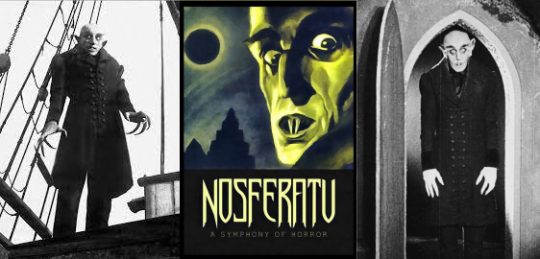
Nosferatu
F.W. Murnau, 1922
Nosferatu is a silent expressionist horror film from the legendary German director F.W. Murnau. It is an unauthorized adaptation of Bram Stoker's Dracula. While not a commercial success upon release in 1922, film historians now consider it an influential and revolutionary film in the horror genre. Since it has been in the public domain since 2019 in the U.S., it is now free to stream on YouTube.
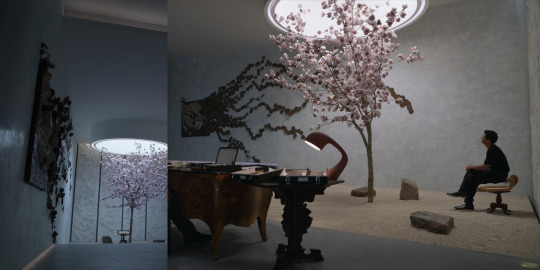
Untitled piece
Sadie Sheldon, undated [Identified by @lanepryce.]

The incredible metalwork piece on the wall of the reading room was made by a New Orleans-based artist, for New Orleans... pizzeria! It was made for Pizza Delicious, using dozens of tin cans. Sheldon describes her work as "site and time-specific projects from found materials (...) related to adaptability, renewal, and appreciating the objects of our everyday life".

New York
George Bellows, 1911 [Identified by @nicodelenfent, here.]
Several of Bellows' pieces have been featured in previous episodes. He was an American realist painter, known for his bold depictions of urban life in NYC. His work "revolutionized the conventions of the traditional American urban vista and surpassed the efforts of other contemporary urban realists" [x].
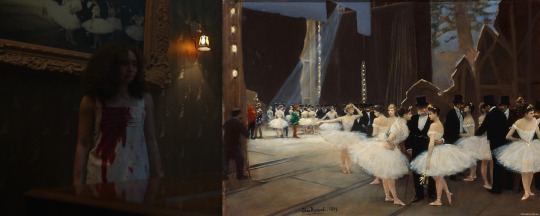
Backstage at the Opera
Jean Beraurd, 1889
Beraurd was a Russian born French painter known for his depictions of Parisian life and society during the Belle Epoque. [Identified by @nicodelenfent.]
Unidentified works
In Claudia's room: above the Knip we can see a painting of what looks like four people, maybe women sitting at a balcony. To the left of the door we can see, on top, a floral bouquet over a dark background, and below that, an illustration or painting of a woman with flowers over a bright pink background.
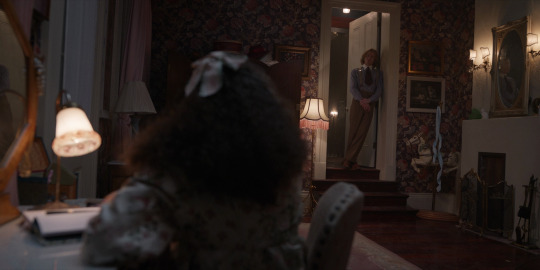
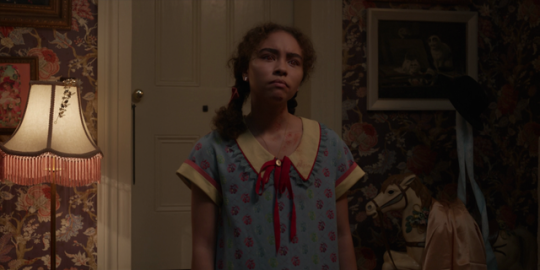
You can see all unidentified works from the first season in this post. If you spot or put a name to any other references, let us know if you'd like us to add them with credit to the post!
Starting tomorrow, we will be rewatching and discussing Episode 5, A Vile Hunger for your Hammering Heart. We can't wait to hear your thoughts!
And, if you're just getting caught up, learn all about our group rewatch here ►
#the vampire claudia#claudia iwtv#louis de pointe du lac#daniel molloy#lestat de lioncourt#vampterview#interview with the vampire#iwtv#amc interview with the vampire#interview with the vampire amc#amc iwtv#iwtv amc#IWTVfanevents#rewind the tape#analysis and meta#art of the episode#the ruthless pursuit of blood with all a child's demanding
34 notes
·
View notes
Text
List of some of my favorite artists

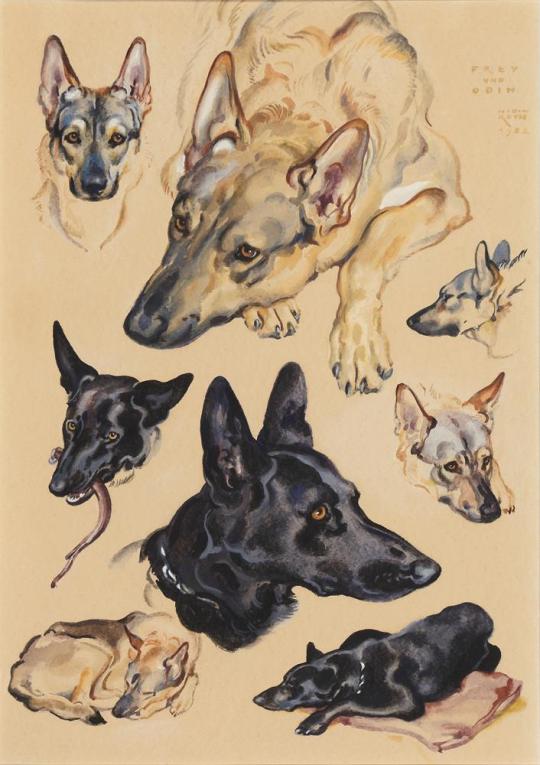
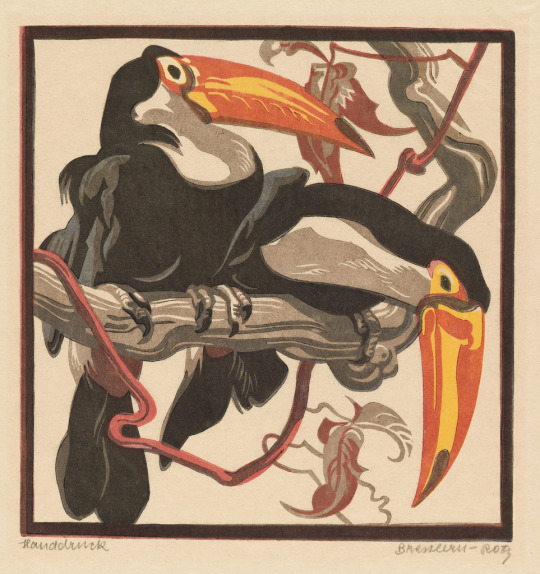
Norbertine Bresslern-Roth: She was an Austrian printmaker and painter who was born in 1891 and died in 1978.
I absolutely love the softness that she captured in her artwork and the personality that shines through in her animal paintings. Her art changed later on into more of a graphical design due to the rise of printmaking and I really enjoy the shapes she captures in some of her later works.


Jessica Taylor: Honesty such amazing work. I'm inspired so much by her amazing knowledge in lighting and how it effects the mood in her drawings and how well it adds to the realism of the subjects she draws. Her social for those interested https://www.artstation.com/jesserintaylor


Franklin Booth: He was an early 20th century illustrator. As a child he would often look for references to study from to learn how to draw. He often referenced wood engravings, which would inspire him to draw in a very similar style but instead done with pen and ink.
Honestly I love this type of art. I have always been fascinated by pen and ink drawings and Booths works really wows me not with just the technical side but also his patience. Even though my hands ache while looking at some of his artworks lol I really enjoy them and just the amount of depth he was able to capture with just lines.
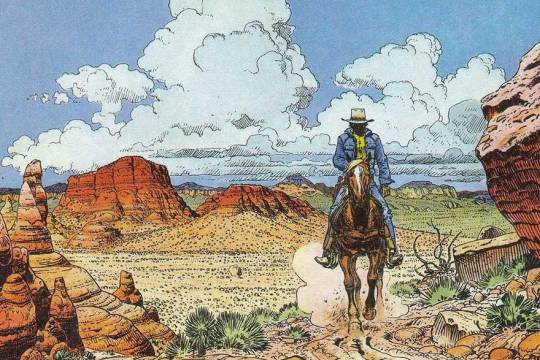
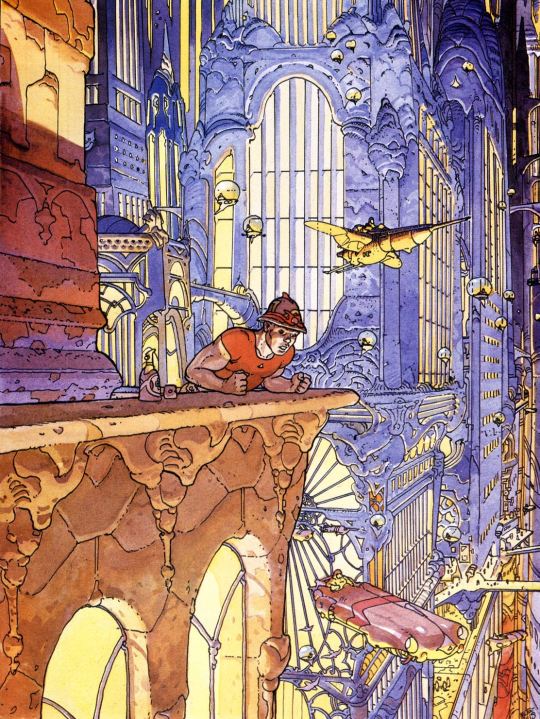
Jean Giraud- He was a French artist, cartoonist, and writer born in 1938 through 2012. He would also go by Moebius and other pseudonyms.
I really enjoy his works because of his use of color and line. Most of the lines made in his works look to me to be done by technical pens which use one single line variation. I also really enjoy how he uses color theory in many of his artworks including the one pictured above to the right, in which he use the complementary colors of yellow and purple with hints of orange that match the blueness of the purple.
So this was just a small list of some of my favorite artists ( if I added more we would be here all day lol) that I get inspiration from. Wanted to write this blog for myself as a nice way to have a place were I can go back and reference some of my favorite artists drawings but also to show others different artists that they may not know of.
#art history#art#artwork#other people's art#animal art#nature#painting#illustration#20th century#favorite artists#blog#text#sketch#digital art#jean giraud#franklin booth#jessica taylor#Norbertine Bresslern-Roth#history#seriously check out all these artist I really like their drawings
55 notes
·
View notes
Text

Léo Fontan, illustrator (French, 1884-1965) • Illustration for La Vie Parisienne • 1920s
#art#illustration#illustrator#artwork#french illustrator#léo fontan#la vie parisienne#sassafras & moonshine blog#illustration blog#magazine illustration#1920s illustration#early 20th century french illustration#sassafras and moonshine blog#illustration blogs on tumblr
9 notes
·
View notes
Text
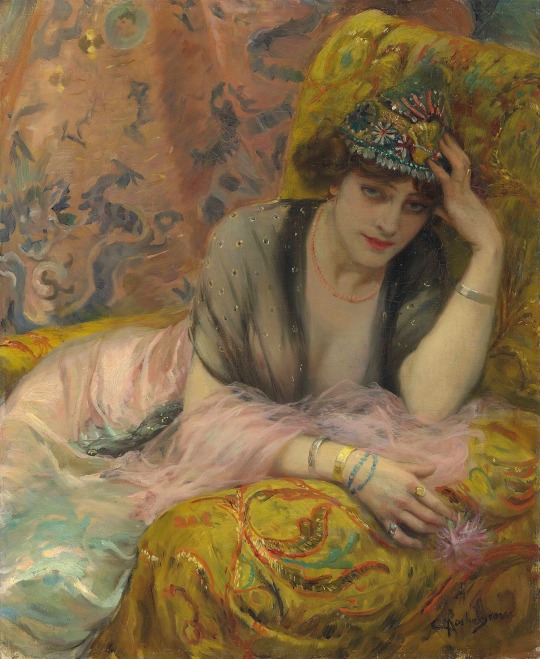
La danseuse Georges Antoine Rochegrosse
#Georges Antoine Rochegrosse#french art#art#painting#art history#early 20th century#illustration#theater#1900s#dancer#fashion#fashion history#portrait
635 notes
·
View notes
Text
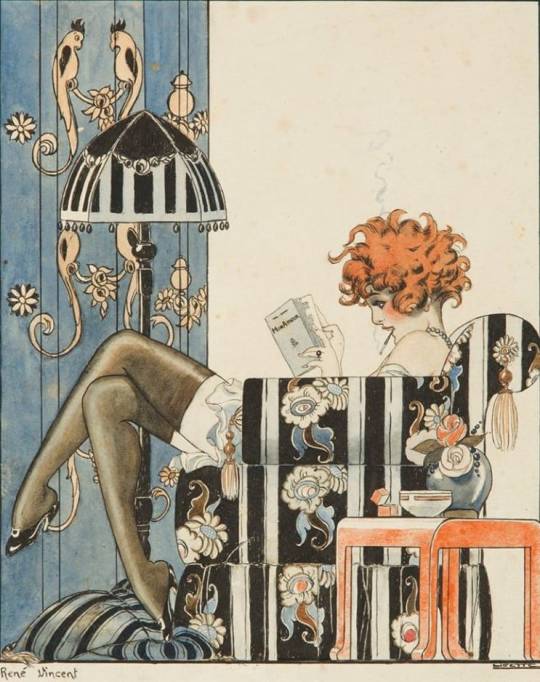
‘My Love’ (1925).
French illustrator René Vincent (1879-1936) for ‘La Vie Parisienne’ magazine. René Vincent was a French illustrator, painter and poster designer. Prevalent in the 1920s-1930s, he worked in the popular Art Deco style. His illustrations helped define early 20th-century advertising, birthing countless imitators and admirers alike. Tintin creator, Hergé, cited René Vincent as an inspiration.
He created perfect worlds with glamour fashionistas in luxury settings, partaking in jolly pastimes. His characters were vibrant and confident. Which in turn attracted many fashion and lifestyle periodicals such as La Vie Parisienne, Femina, Le Rire, and Fantasio. Interestingly, he went under a few pseudonyms, Rene Mael, Rageot and Dufour, allowing him to change style freely.
37 notes
·
View notes
Text




are you seeing this shit fluttershy.....
been in a big hj ford mood recently
#sucks that orientalism was to late victorian early 20th century illustrators what blatant racism is 2 french theorists though.#txt
2 notes
·
View notes
Note
Zombie apocalypse or robot apocalypse?
Since we're bringing back ask culture!
since we’re bringing back ask culture… together 🤝🤧💖🫶
idk honestly…. my instinct is to say zombie i think shes a classic and i love the threat of a loved one becoming the very being you are fighting, especially if its a slow transition and you get a moment of the character fighting it and inevitably losing….. ugh so good. also shoutout to community season 2 episode 6 epidemiology you will always be that bitch. however i have been doing some reading on the machine and modernism and there is something so fascinating about the way modernists articulate a machine-human hybrid where like its almost the machine acting as a virus taking over humanity, and (at least in what ive been researching) it seems like this is usually articulated as like. the laborer mechanized or the city dweller disappearing into an increasingly mechanical landscape but there is also a throughline in early cinema especially of filmed people as ghosts that i think is very interesting…. all this to say i think zombie is the classic safe choice for me but a well done version of early 20th century mechanized apocalypse would be super cool. idk if it would translate well to the 21st for me though… idk i think ai taking over is feeling a bit worn as a subject for me recently lol
and actually you know what. might as well plug what the research is for lol. im writing a paper on this book written in 1919 by blaise cendrars with illustrations by fernand léger called the end of the world filmed by the angel of notre dame. super interesting here is a link to the full book. its in french but even if you cant read it i think the illustrations are nifty 👍
9 notes
·
View notes